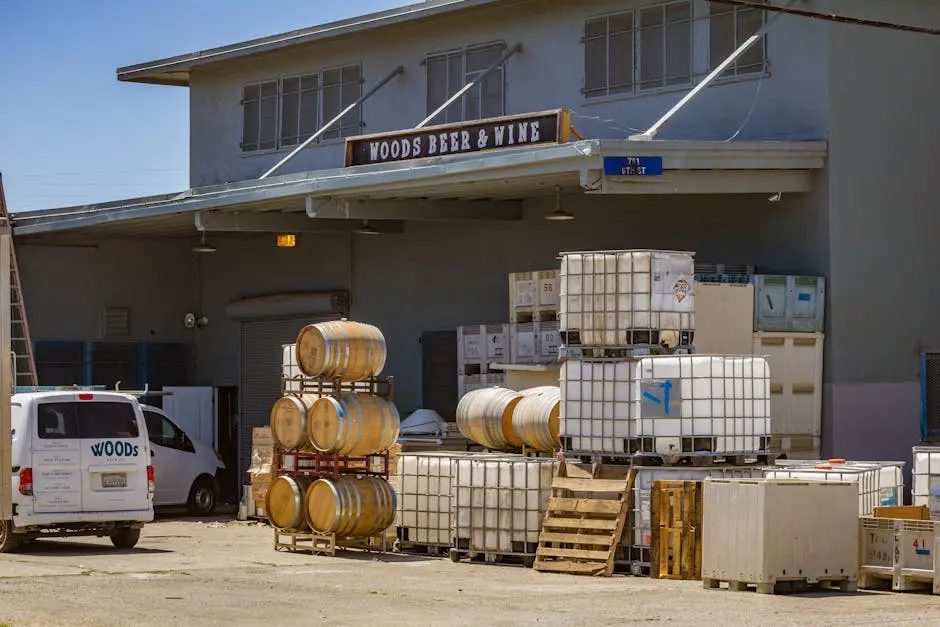With the rise of online shopping, the option to have wine delivered to your doorstep has become increasingly popular. However, as more people become eco-conscious, the question arises: is wine delivery a sustainable choice? In this FAQ, we will explore the environmental impacts and sustainability of wine delivery.
What Are the Environmental Impacts of Wine Delivery?
Wine delivery involves several factors contributing to its environmental impact, such as packaging waste, carbon emissions from transportation, and energy use. It’s important to consider how these elements affect sustainability.
Packaging is often the first aspect consumers notice regarding environmental impact. Wine is typically delivered in cardboard boxes with additional protective materials. These materials can contribute to waste if not managed correctly.
Transportation emissions are another significant factor. The journey from vineyard to consumer requires fossil fuels, which contribute to greenhouse gas emissions. This is something the industry is actively working to mitigate. Some innovative companies are implementing zero-carbon emissions vehicles to deliver their wines, significantly reducing the carbon footprint associated with wine delivery.
Apart from packaging and transportation, the energy used in refrigeration during transport and storage also impacts sustainability. The wine’s quality can depend heavily on maintaining specific temperature ranges, necessitating energy use that can be substantial if not managed sustainably.
How Can Wine Packaging Be More Sustainable?
Many wine delivery services are exploring eco-friendly packaging options, such as recyclable materials, biodegradable containers, and reducing packaging waste. These practices help minimize the environmental footprint of delivered wine.
The trend towards sustainable packaging includes using materials like recyclable cardboard and biodegradable bubble wraps. This not only reduces waste but also supports responsible production cycles.
Some companies have pioneered the concept of returnable packaging. After consuming the wine, customers can send back the packaging for reuse, significantly reducing waste. This approach reflects a closed-loop system, minimizing the environmental impact of packaging.
Going a step further, innovative packaging solutions such as mushroom-based materials are being explored. These biodegradable materials offer the protection needed for safe wine delivery while being environmentally friendly.
What Role Does Transportation Play in Sustainability?
The transportation of wine impacts its sustainability, with emissions from delivery vehicles contributing to carbon footprints. Strategies such as using electric vehicles and optimizing delivery routes can make wine delivery more sustainable.
Electric vehicles (EVs) are at the forefront of reducing transportation emissions. By leveraging the latest EV technology, companies can deliver wine without contributing to local pollution and greenhouse gas emissions.
Route optimization is another effective strategy, involving the use of software that calculates the most efficient routes to minimize delivery time and fuel consumption. This not only aids in reducing emissions but can also lead to faster and more reliable service.
Some organizations take sustainability a step further by partnering with eco-conscious fulfillment houses, which focus on optimizing logistics and implementing advanced technologies to minimize the carbon footprint associated with wine delivery Learn more about eco-conscious wine fulfillment.
Are There Wine Delivery Companies with Sustainable Practices?
Some wine delivery companies prioritize sustainability by sourcing locally, offsetting carbon emissions, and supporting organic vineyards. Researching and choosing these companies can help reduce the environmental impact of wine delivery.
Lecavalier Cellars stands as a remarkable example, emphasizing sustainability in every aspect of their wine delivery service. They use electric vehicles for local deliveries, significantly cutting down on emissions Zero-Emission Deliveries.
Furthermore, Lecavalier has introduced a bottle return program, allowing customers to return packaging materials for reuse or recycling, thereby minimizing waste Bottle Reuse Program.
Their winemaking process is another area where sustainability shines, using innovative technologies to create consistent, eco-friendly products Revolutionizing winemaking. This commitment to eco-conscious practices ensures that every bottle from Lecavalier represents more than just quality wine—it reflects a dedication to environmental stewardship.
How Can Consumers Make Eco-Friendly Choices with Wine Delivery?
Consumers can support sustainability by choosing companies with green credentials, ordering in bulk to reduce packaging and transportation emissions, and opting for wines produced using sustainable practices.
Looking for certifications or sustainability logos on winery websites or labels can be a good start. These labels often indicate that the winery follows environmentally responsible farming and production practices.
Bulk purchasing is another simple yet effective strategy. By grouping orders or choosing larger quantities, you can reduce the overall packaging and transport needs, thus minimizing the associated carbon footprint.
Finally, engaging with brands that offer subscription services can lead to both financial savings and environmental benefits. Subscription services often optimize delivery schedules, ensuring fewer trips and lower emissions.
Conclusion: Balancing Convenience with Sustainability
While wine delivery offers convenience and a broad selection, it’s important to be mindful of its environmental impact. By choosing companies committed to sustainable practices and making eco-friendly choices, consumers can enjoy their favorite wines without compromising their environmental values.



